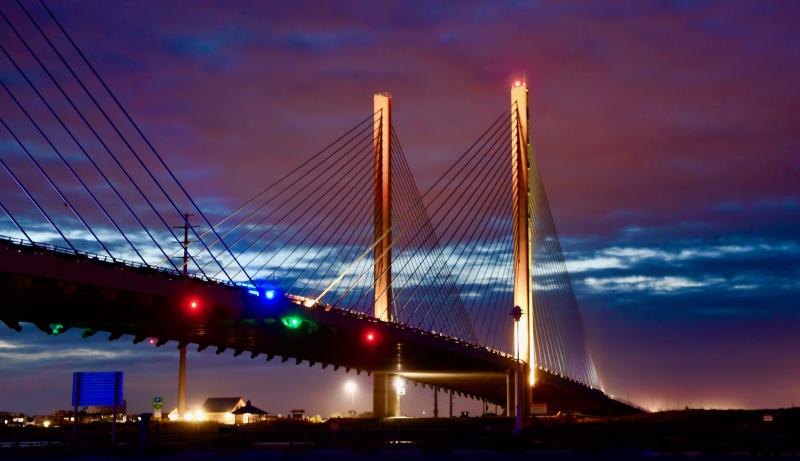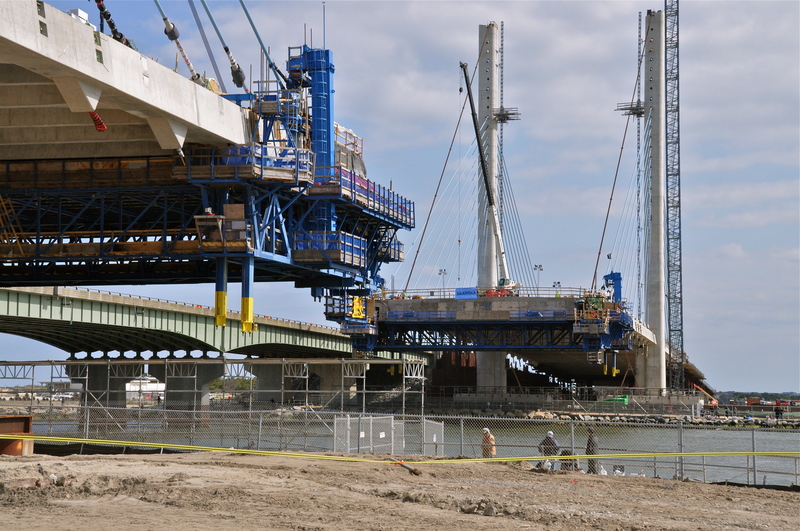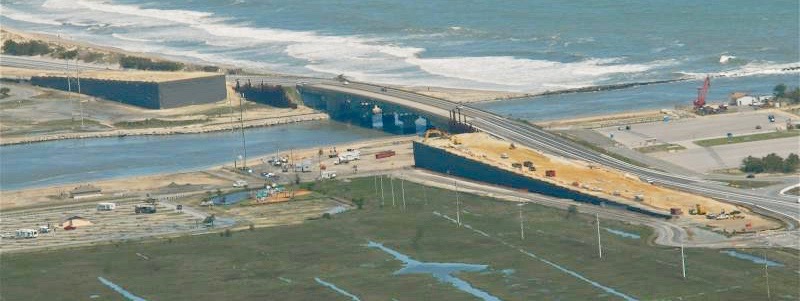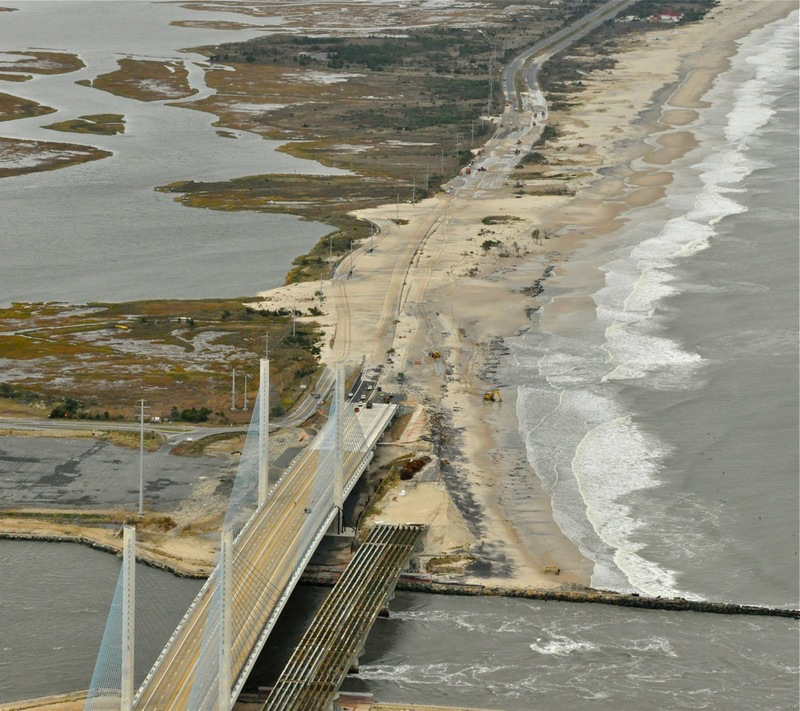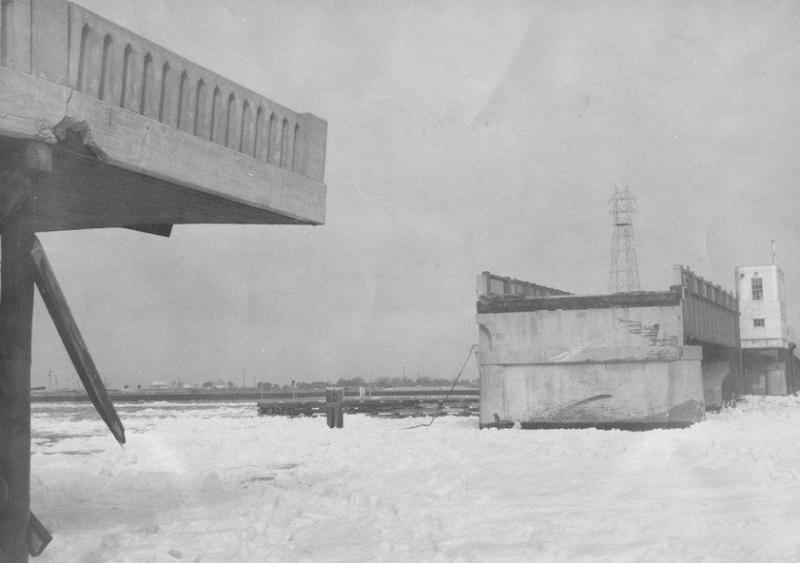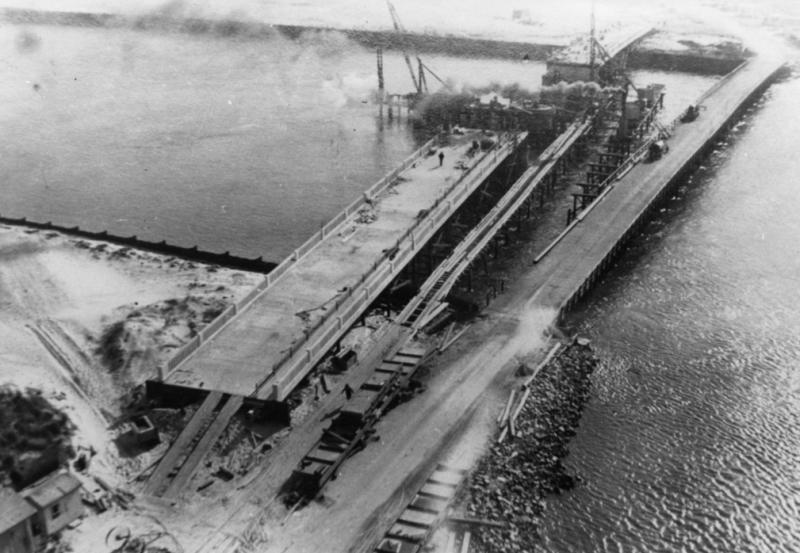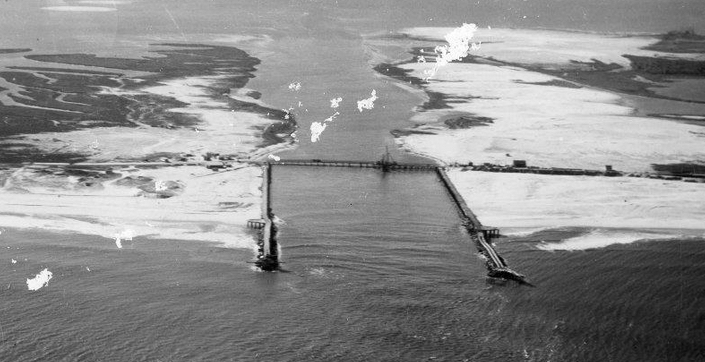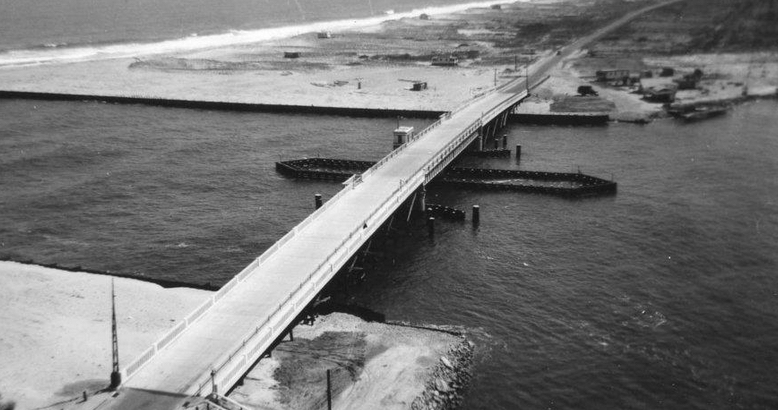Inlet bridge history dates back nearly nine decades
Thousands of people drive over the Indian River Inlet bridge daily and never realize the history they are riding over. The current Charles W. Cullen Bridge is the fifth span over the past 88 years to cross the inlet.
Over those years, one of the bridges collapsed, killing three people; another was closed because of damage caused by the Storm of 1962, and yet another was deemed unstable.
And before the eventual completion of the fifth bridge in 2012, the history includes failed engineering, financial woes and a lawsuit.
Mother Nature has not been kind to the bridges either. Storms, high tides, fast currents and shifting sands are also part of the history of the spans.
To understand the bridge history, you have to first understand the inlet connecting Indian River Bay with the Atlantic Ocean. Until 1928, the inlet was a natural waterway that actually shifted north and south along a two-mile stretch of the coast.
The first timber bridge was built in 1934, but it lasted fewer than five years as it succumbed to the saltwater environment.
In order to create a more stable inlet for boat passage, dredging was commonplace from 1928 throughout most of the 1930s. The U.S. Army Corps of Engineers installed jetties to hold the inlet in place, allowing for construction of the first steel structure over the inlet from 1938-40, a swing bridge at a cost of $165,900. At the same time, two-lane Ocean Highway (now Route 1) was completed as a connection along the coast.
The swing bridge collapsed Feb. 10, 1948, due to extreme ice flows.
Unfortunately, three employees of the Electric Company of Philadelphia were killed during the collapse. As a large section of the bridge fell into the inlet, it carried a truck and its driver as well. Two of the four men who tried to rescue the driver were swept away into the inlet.
Bridge vs. Storm of ‘62
It was another four years before a third bridge was constructed. That two-lane swing bridge was closed after suffering extensive damage during the Storm of 1962.
In 1965, the fourth span, a steel girder bridge, opened. A second bridge was added in 1976 west of the existing span. For the first time, the bridge had four lanes to accommodate the highway's widening.
Caused by the extreme current in the inlet, scouring of the bridge's piers became a problem that led the Army Corps to install protective rip-rap around the piers in 1989. As a temporary solution, it was determined that the structurally deficient bridges needed to be replaced.
In 2005, officials released an ominous prediction that the bridge might last another three to five years, and collapse – because of the scouring – would probably occur sometime between 2008 and 2013.
However, construction of the fifth bridge would hit significant roadblocks over the next seven years.
Those roadblocks included two abandoned designs, shifting earthen approach ramps, labor union threats of a lawsuit and an eventual lawsuit in 2011 against the original construction company because of the shifting approach ramps.
The fifth bridge saga
The first contractors were awarded the bid in 2003 for a new bridge, and they planned the longest arch-span bridge in the world at 1,000 feet, to keep the piers out of the water. By 2005, the project was delayed due to state budget cuts, and the contractors were forced to rethink their design to cut costs. In 2006, it was determined that a cable-stayed bridge, not an arch-span bridge, was the best and most affordable option, and construction began.
I started working for the Cape Gazette about the same time as the fifth-bridge drama was unfolding. Suffice it to say, the years 2003-07 were not good ones for DelDOT, but the saga generated stories that filled the pages of the newspaper.
DelDOT put bids out in 2006 for a design-build project for a new bridge of a cable-stayed design, at 1,400 feet long without piers in the water.
After the bid was awarded, construction of earthen approach ramps began on both sides of the inlet in February 2006; they were completed in 2007. Concerns over instability of the ramps arose almost immediately, and by March 2007 it had become clear that the settling of the ramps was not acceptable.
Legal problems also began to affect progress. An unsuccessful lower bidder questioned the bidding process when a company making a $124.9 million bid – $800,000 more than the lowest bid – could get the contract. Union leaders also complained that the winning bidder had not promised to use Delaware union labor, unlike the lower bidder.
Faced with the possibility of a lawsuit, in October 2007, DelDOT canceled construction of the bridge under the existing contract, planned to remove the unstable approach ramps, and rebid the contract for a longer, 2,600-foot cable-stayed bridge – again without piers in the water – of a new design that did not require the approach ramps.
In 2008, the approach ramps were removed and finally, that same year, Skanska, one of the top bridge builders in the world, was awarded a $150 million design–build contract for a new state-of-the art bridge.
As construction progressed, DelDOT awarded George & Lynch an $11.6 million contract to build the Route 1 approach roads to the new bridge as well as to demolish the old bridges, which was completed in spring 2013.
In 2011, the state also won a $5.25 million settlement against the original bridge design team and its subcontractor over the failed earthen approach ramps.
On May 6, 2012, the Indian River Inlet bridge was officially dedicated in a public ceremony allowing the public to walk across the span.
The bridge has weathered huge storms, including Superstorm Sandy, which occurred not long after its opening. It was built to last at least 100 years.
The new bridge, with four travel lanes and a pedestrian walkway on the east side, has become a much-photographed Cape Region landmark. Its lit 196-foot pylons stand as beacons along the coastline. The blue lights are not only striking, they also are good for bats, which are not disturbed by the color.
Most people are not aware that the bridge is covered with sensors in the pylons, support cables and roadway, which monitor everything from stress on the bridge supports to wind-related movement to penetration of road salt used in winter.
The bridge's namesake
So who is Charles W. Cullen? He was a well-respected Georgetown lawyer who served on the Delaware State Highway Commission from 1930-40, and was chair in 1938 and 1939. He oversaw construction of the first swing bridge over the inlet. Four of the five bridges have been named after Cullen, although most people refer to the span as the Indian River Inlet bridge.
The five bridges
1934 – Timber bridge deemed unsafe in less than five years.
1940 – Swing bridge opens and collapses in February 1948 due to heavy ice flows.
1952 – New swing bridge built; later closed by damage from Storm of 1962.
1965 – Steel girder, two-lane bridge constructed.
1976 – Second span of fourth bridge added, widening traffic to four lanes.
2012 – Fifth bridge opens.
